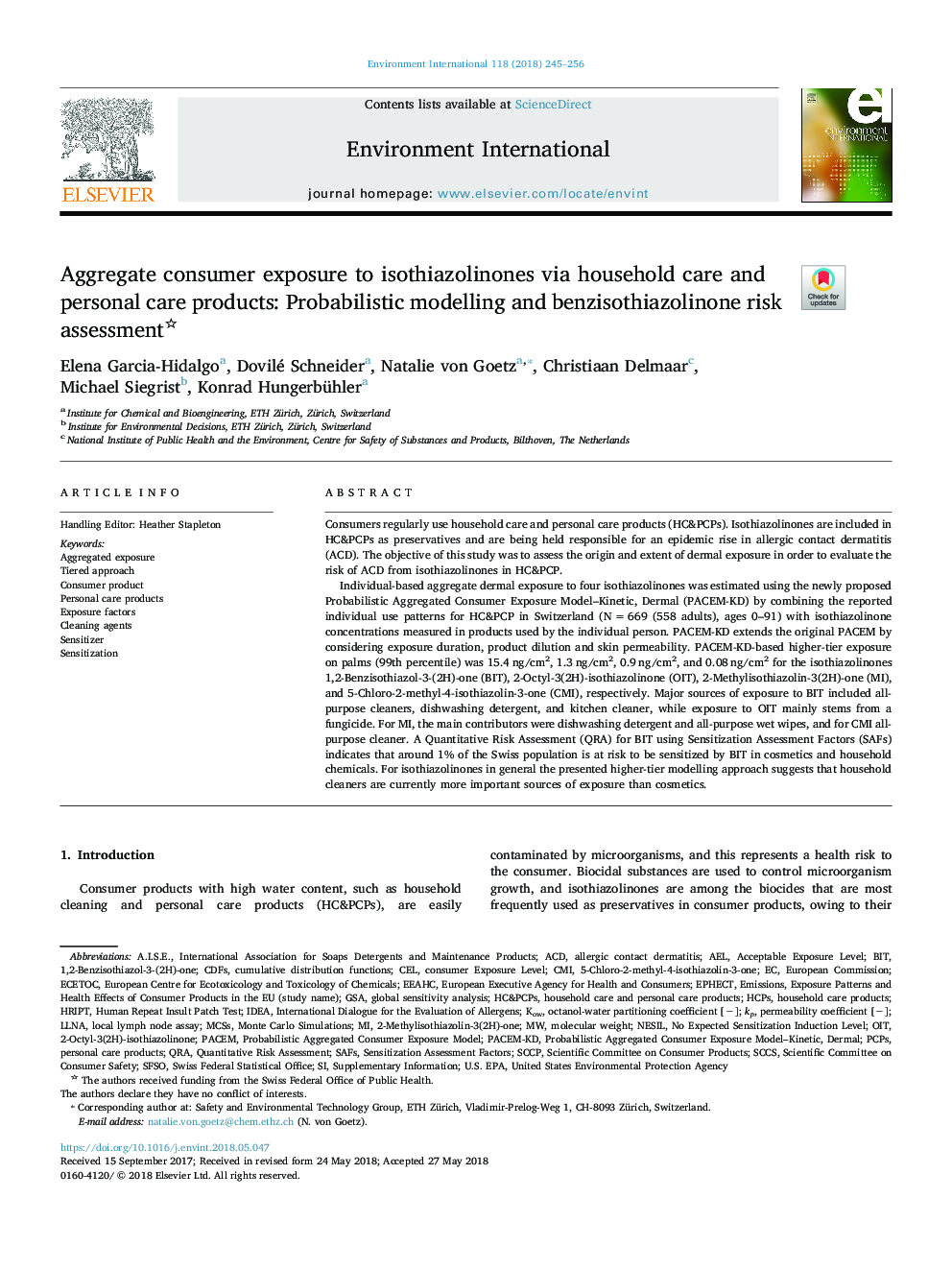| Article ID | Journal | Published Year | Pages | File Type |
|---|---|---|---|---|
| 8855125 | Environment International | 2018 | 12 Pages |
Abstract
Individual-based aggregate dermal exposure to four isothiazolinones was estimated using the newly proposed Probabilistic Aggregated Consumer Exposure Model-Kinetic, Dermal (PACEM-KD) by combining the reported individual use patterns for HC&PCP in Switzerland (Nâ¯=â¯669 (558 adults), ages 0-91) with isothiazolinone concentrations measured in products used by the individual person. PACEM-KD extends the original PACEM by considering exposure duration, product dilution and skin permeability. PACEM-KD-based higher-tier exposure on palms (99th percentile) was 15.4â¯ng/cm2, 1.3â¯ng/cm2, 0.9â¯ng/cm2, and 0.08â¯ng/cm2 for the isothiazolinones 1,2âBenzisothiazolâ3â(2H)âone (BIT), 2âOctylâ3(2H)âisothiazolinone (OIT), 2âMethylisothiazolinâ3(2H)âone (MI), and 5âChloroâ2âmethylâ4âisothiazolinâ3âone (CMI), respectively. Major sources of exposure to BIT included all-purpose cleaners, dishwashing detergent, and kitchen cleaner, while exposure to OIT mainly stems from a fungicide. For MI, the main contributors were dishwashing detergent and all-purpose wet wipes, and for CMI all-purpose cleaner. A Quantitative Risk Assessment (QRA) for BIT using Sensitization Assessment Factors (SAFs) indicates that around 1% of the Swiss population is at risk to be sensitized by BIT in cosmetics and household chemicals. For isothiazolinones in general the presented higher-tier modelling approach suggests that household cleaners are currently more important sources of exposure than cosmetics.
Keywords
CMIHRIPTQRAAELSCCPLLNAECETOCHCPSACDSCCsCDFsU.S. EPAno expected sensitization induction levelCelAcceptable Exposure LevelGSAPCPsMCSSLocal lymph node assayUnited States Environmental Protection AgencyQuantitative risk assessmentsupplementary informationIDEABITGlobal sensitivity analysisCleaning agentshuman repeat insult patch testSensitizerSensitizationAllergic contact dermatitisTiered approachOITMonte carlo simulationsExposure factorsConsumer productPersonal care productsEuropean Centre for Ecotoxicology and Toxicology of ChemicalsNESILMolecular weightScientific Committee on Consumer SafetyEuropean CommissionKow
Related Topics
Life Sciences
Environmental Science
Environmental Chemistry
Authors
Elena Garcia-Hidalgo, Dovilé Schneider, Natalie von Goetz, Christiaan Delmaar, Michael Siegrist, Konrad Hungerbühler,
